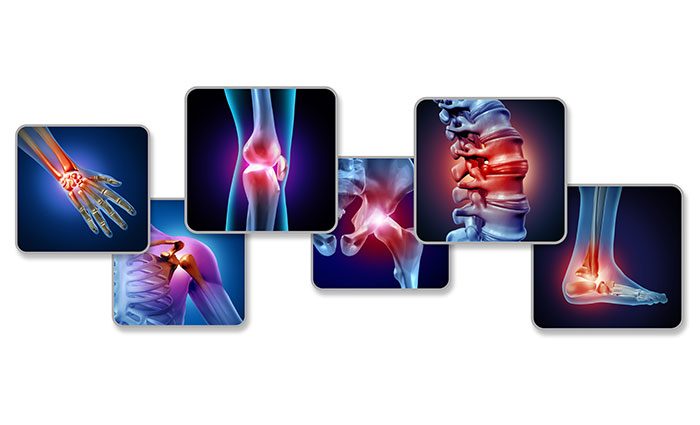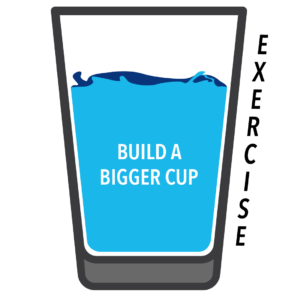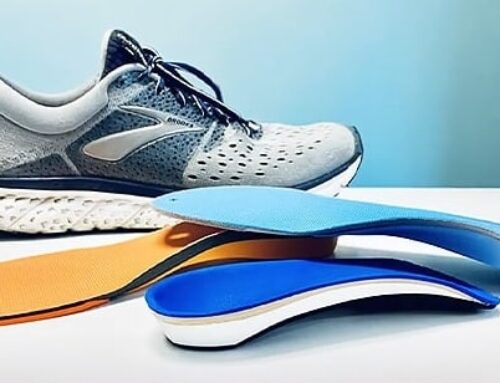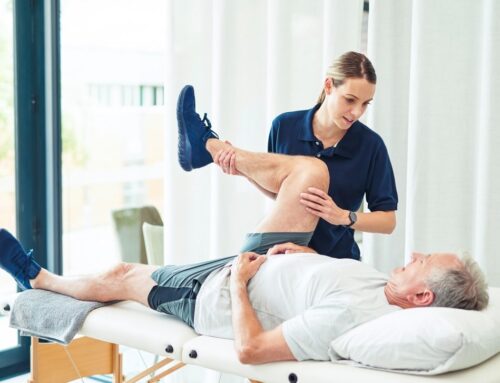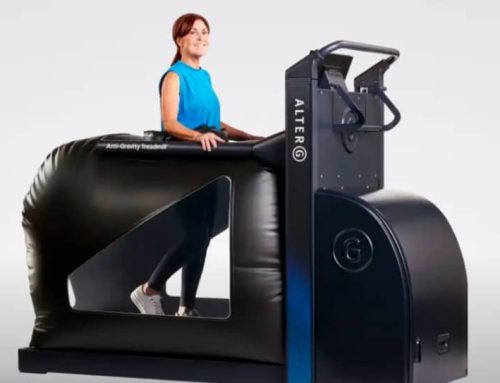Pain is often complicated and multifaceted. One of the simplest ways for physical therapists to help patients in understanding pain is with a cup metaphor. Every patient has a cup that is filled with different biopsychosocial stressors, such as:
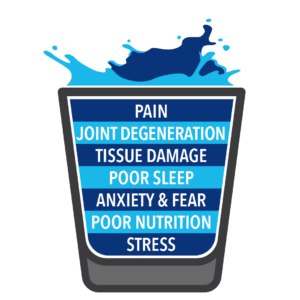
- Stress
- Worry
- Lack of activity
- Joint degeneration
- Doing too much, too soon
- Sensitive nervous system
- Tissue damage
- Fear
- Poor sleep
- Poor nutrition
- Anxiety
- Bad habits
The cup metaphor suggests that pain occurs when all of the stressors in our lives exceed the space in our cup. When the cup overflows, we experience pain.
As physical therapists, we have two options in treating patients with pain. We can do one of two things:
- Help decrease some of the stressors to reduce the load in their cup
- Help them build a bigger cup
We experience pain when we don’t adapt positively to stressors in our lives. This also acknowledges that “stressors” are more than just the physical load we put on our bodies. Stressors can be attributed to depression, fear, past history, etc., many of which may be contained in your cup.
Stressors in the cup are not all inherently bad when we are gradually exposed to them, as they can help us to tolerate more, improve our coping skills and build resilience to environmental pressures.
Ways we can help to calm stressors:
- Seek support and reassurance
- Get educated about our stressors
- Avoid aggravating activities
- Do isometric exercises
- Modify activities
- Utilize medication and relaxation
- Receive manual therapy
- Symptom modification: manipulation, Graston, Kinesio taping, dry needling and/or massage
A myriad of current medical research also helps in understanding pain. Studies indicate that we are not very good at changing biomechanics (how our muscles, bones, tendons and ligaments work together to produce movement). When trying to fix biomechanics variables (movement faults in the cup), research demonstrates that some things cannot be “fixed,” including osteoarthritis, cartilage or muscle tears, knee valgus, disc herniations, bone spurs and scapular dyskinesis. These factors can exist and be associated with pain, but following treatment, pain can be gone, function resolved, and those faults still exist.
Ways physical therapists can help build a bigger cup:
- Ask how the patient could be healthier
- Build positive beliefs
- Improve mood
- Improve coping mechanisms
- Encourage better food choices
- Encourage better sleep habits
- Introduce gradual physical loading
As physical therapists, our go-to on how to “build a bigger cup” is usually EXERCISE.
As part of a comprehensive exam, we ask our patients, “Which factors do you think you have in your cup?” Using this information, we can design a plan with their environmental pressures in mind. The plan entails methods to calm down biopsychosocial turbulence, decrease stressors in the patient’s cup, and even better, help patients build a bigger cup, so they can develop resilience against current and future life stressors.
Physical therapy in Raleigh, Cary, Morrisville and Holly Springs
The physical therapists at Cary Orthopaedics understand that each patient is unique, so we tailor a multifaceted treatment plan that will yield the best results. Our physical therapists are never tied to one approach and deliver a variety of techniques, exercises and strategies. To learn more about how physical therapy can help you, contact us today.

